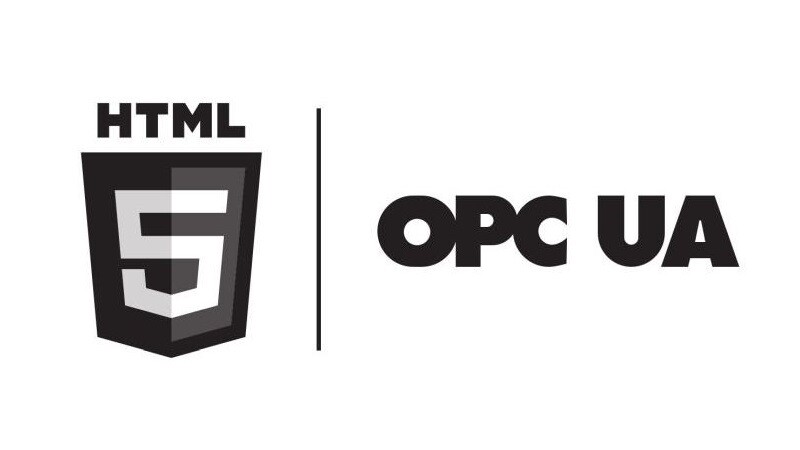OPC Unified Architecture, OPC UA for short, is a standardized and secure solution for machine communication in modern factory automation. The cross-platform standard is based on the specifications of the OPC Foundation and is now supported by all well-known manufacturers of machines and systems, as well as by all common PLC manufacturers, such as Siemens, Bosch Rexroth, Alan Bradley, Beckhoff, etc. Essentially, OPC UA defines the transmission protocol for process data based on a classic client-server architecture. This protocol allows controllers and devices to communicate with each other, even if they are of different designs or use different operating systems.
HTML5 is the current standard in web technology, which is supported by all major browsers. One focus of HTML5 is the realization of rich web applications. This is the presentation of interactive web apps in a browser that are just as powerful in design and interaction as established desktop applications. Unlike these, they do not require a local installation on a defined operating system. They are distributed over the Internet and run in an any web browser. “Rich” stands for the large number of different multimedia formats for pictures, video and audio, as well as for the extensive design and layout options.
A Gateway Between The World Of Automation And Any Web Client
What is more natural than combine these two widely used standards, for example in the form of a gateway between OPC UA and HTML5? This gateway enables exchanging process data easily between the world of automation and any web client, for example in order to visualize them or to realize innovative Industry 4.0 and IoT scenarios on the shop floor, such as predictive maintenance and predictive quality. In doing so, many characteristics of both standards complement each other in an ideal way, as described below.
High Data Throughput With Secure Encryption
The gateway is characterized by high data throughput on a robust, proven architecture. The processing of very large amounts of data is possible. As our tests have shown, several thousand process variables can be easily stored, monitored and displayed in almost real time on a PC platform. Furthermore, it is possible to forward the data via OpenSSL with TLS in encrypted form to protect against unauthorized access from the outside.
This product includes software developed by the OpenSSL Project for use in the OpenSSL Toolkit.
(www.openssl.org)
Dynamic HMI Generation On The Base Of Structured Data
In addition to the pure data transfer, OPC UA also offers the option of structuring and displaying process data as objects. Structures that are defined, for example in a controller, can be provided via OPC UA and queried by the client in order to display these on the client side as objects in a hierarchy. This allows the dynamic generation of a Human Machine Interface (HMI) at runtime based on these hierarchical objects.
Machine Data Exchange Thanks To OPC UA Companion Specifications
Within OPC UA it is possible to define process data objects as models for data exchange and to standardize them across manufacturers in so-called “OPC UA Companion Specifications”. These models are mostly industry- or application-specific (e.g., packML, MTconnect, etc.) and define the content (semantics) of the transmitted data structures and their meaning.
Thanks to OPC-UA and the enhancements in the form of companion specifications, it is possible to exchange machine data across manufacturer boundaries. Unfortunately, there is currently only a manageable amount of these data models. However, many industry associations such as the VDMA are currently working on the expansion of OPC UA through Companion Specifications.
OPC UA 2 HTML5: A Unified Standard
With Web HMIs, such as can be created with the HMI system WebIQ from Smart HMI, the process data and models of the OPC UA servers can be accessed directly in a machine or on the shop floor and visualized with HTML5.
Thanks to the universal use of HTML5 across any platforms, from PCs to mobile tablets and smart phones, and in conjunction with OPC UA, a truly “unified standard” is emerging, with which enables future I4.0 solutions in production already today.

